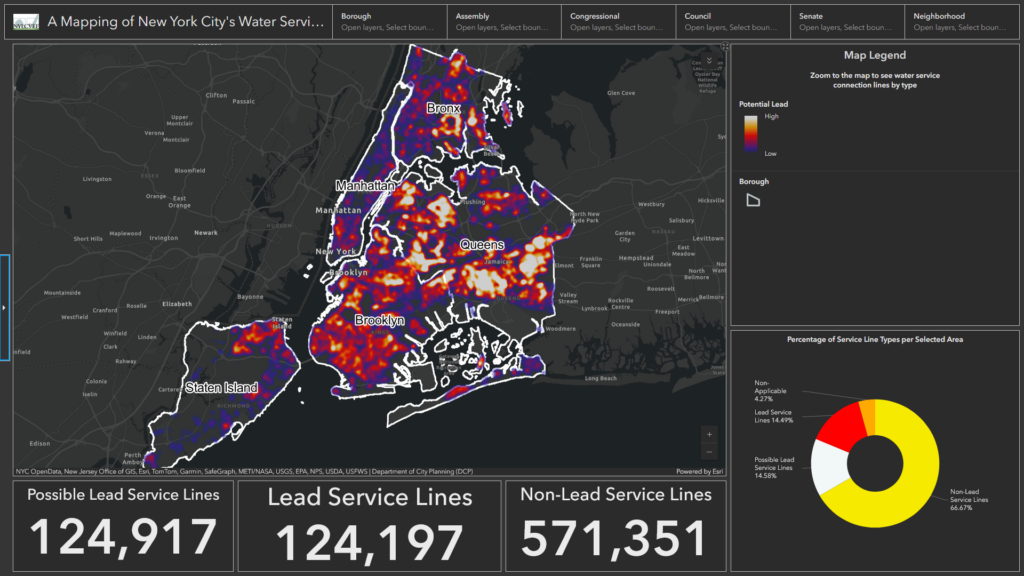NYLCVEF’s new interactive map and comprehensive report was created to help New York City residents determine if the building they live in (i.e., small apartment building or a single-family home) or visit or work in (i.e., a house of worship or small office) has a drinking water service line that is or may be made of lead.
A drinking water service line is the pipe that delivers water from the water main in the middle of a street to a building, and lead can leach into drinking water from these pipes and other plumbing if they contain lead.
The interactive map can also be searched by neighborhood, borough and legislative district, which will empower residents and public officials to advocate for clean drinking water for themselves and their neighborhoods.
Lead is a poisonous heavy metal that can affect almost every organ and system in the human body, often with irreversible effects. People of all ages face health risks from lead exposure, but fetuses and young children are most susceptible to the adverse effects of lead. The CDC, the American Academy of Pediatrics, the World Health Organization, and the EPA all state that there is no safe level of lead exposure.
What makes lead exposure particularly dangerous in drinking water is that it is colorless, tasteless, and odorless.
As far back as 1858 until about 1961, the New York City not only permitted the use of lead service lines (LSL), but at times encouraged or specifically required them to be used. In 1961, NYC banned LSL installations and in 1987, the use of lead solder in plumbing systems.
 NYLCVEF has been working with partners at the NYC Coalition to End Lead Poisoning (NYCCELP) to raise awareness about this issue and the fright for transparency from the city’s leadership. According to a 2023 report by NYCCELP, an estimated 1 in 5 New Yorkers may be drinking from lead or possible lead service lines.
NYLCVEF has been working with partners at the NYC Coalition to End Lead Poisoning (NYCCELP) to raise awareness about this issue and the fright for transparency from the city’s leadership. According to a 2023 report by NYCCELP, an estimated 1 in 5 New Yorkers may be drinking from lead or possible lead service lines.
In April 2019, the NYC Council enacted NYC Local Law 65, which required DEP to compile an inventory of each service line and the material it was made of and to publish this information both as a data set and an online interactive map.
This new map, organized by NYLCVEF and our partners at the NYCCELP, lays that data out and breaks it down by neighborhood and more.
If you have a service line or plumbing fixtures that contain lead, or if you don’t know what material type they’re made of, follow these tips to minimize your lead exposure:
- RUN your water for at least 30 seconds or until it gets cold. Once the water is cold, run it for 15 seconds more.
- USE COLD WATER for cooking, drinking, or preparing infant formula. Hot tap water is more likely to contain lead and other metals.
- REMOVE AND CLEAN the faucet screen monthly (also called an aerator), where small particles can get trapped.
- HIRE a licensed plumber to identify and replace plumbing fixtures and/or service line that contain lead.











